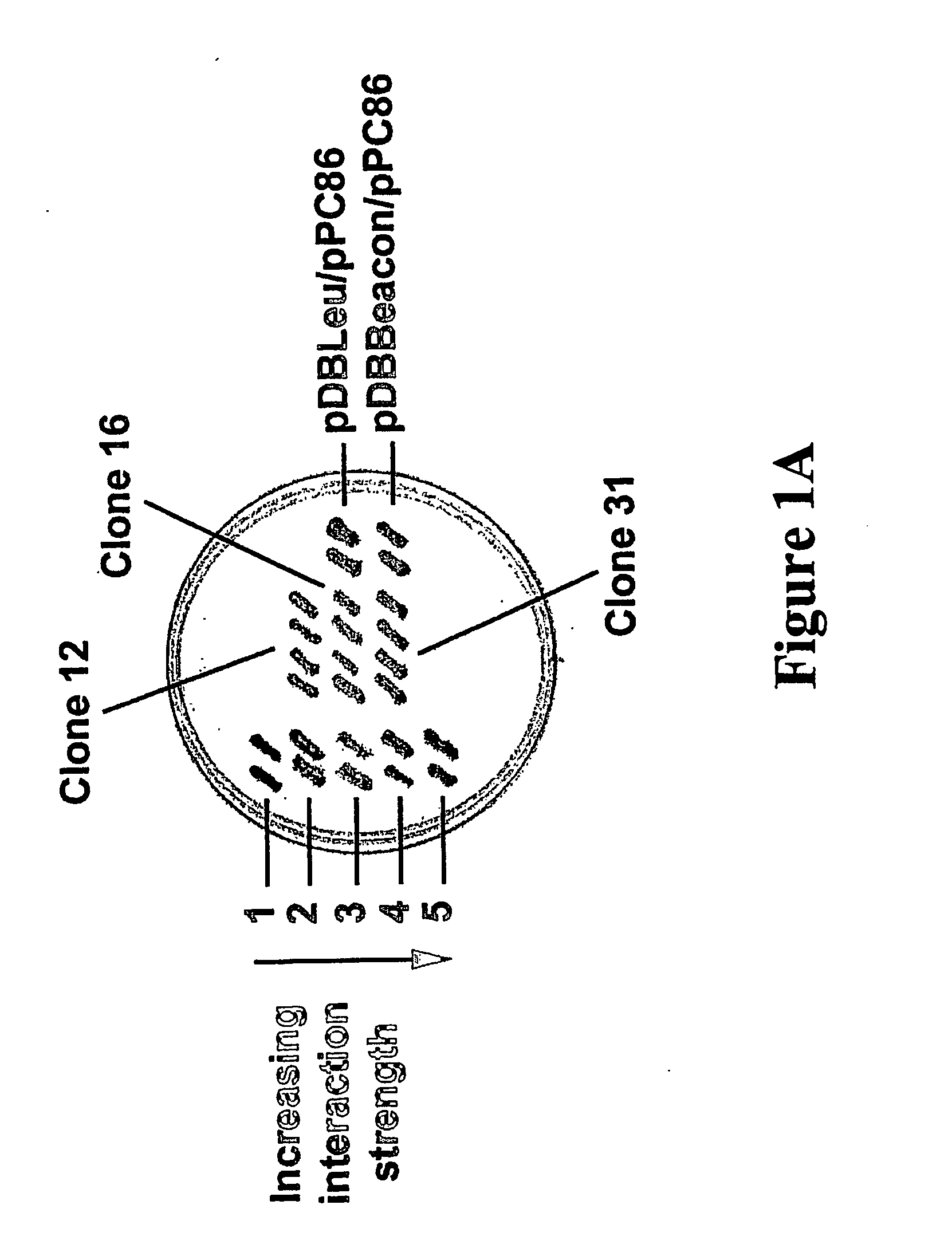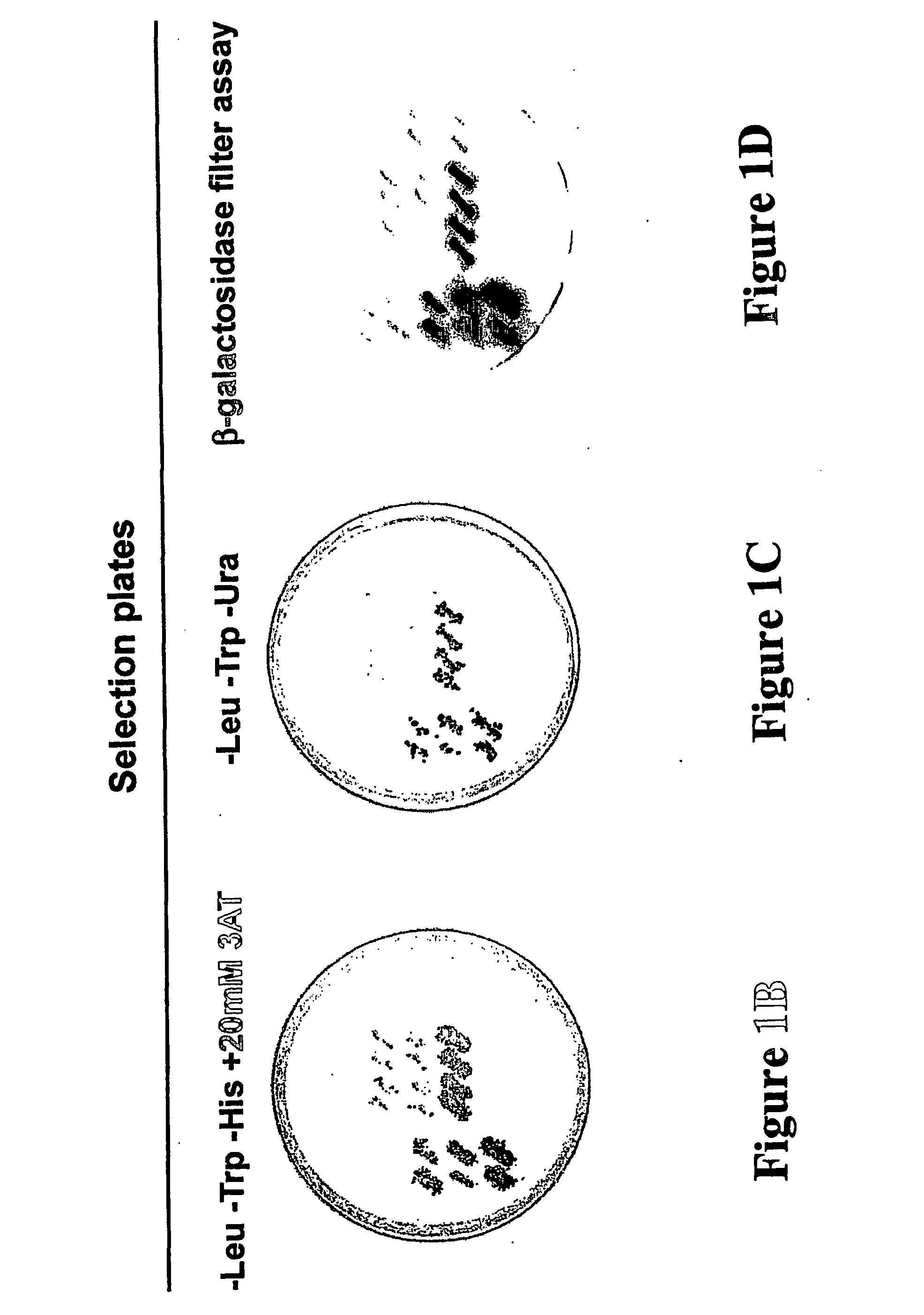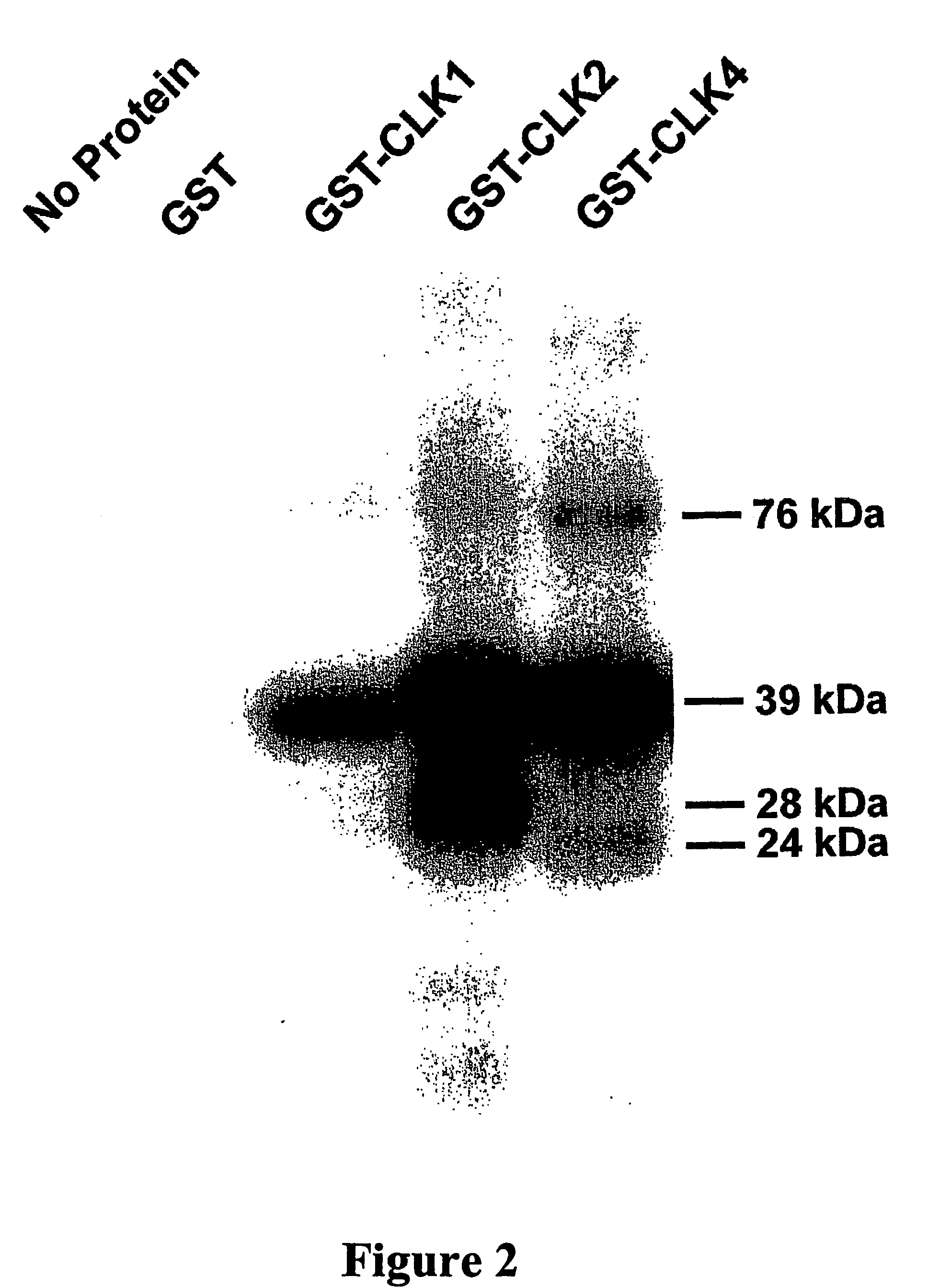Therapeutic molecules
a technology of therapeutic molecules and ligands, applied in the field of ligands for proteins, can solve the problems of surprisingly few significant findings, inability to detect chromosomes, and inability to produce definitive evidence of chromosomes in genome-wide scans in various population groups
- Summary
- Abstract
- Description
- Claims
- Application Information
AI Technical Summary
Benefits of technology
Problems solved by technology
Method used
Image
Examples
example 1
[0160] Yeast two-hybrid screening with the ProQuest™ two-hybrid system (Life Technologies) was performed as described in Walder et al., Diabetes 51: 1859-1866, 2002. The entire coding sequence of Beacon (Genbank Accession # AF318186) was cloned into the yeast vector pDBLeu, in fusion with the reading frame of GAL4 DNA binding domain. MaV203 transformed with pDBLeu-Beacon were grown on plates containing 20 mM 3-Amino-1,2,4-Triazole (3AT) in order to suppress basal expression of HIS3. MaV203 cells harbouring pDBLeu-beacon were transformed with 18 μg of plasmid DNA harvested from a ProQuest™ human brain cDNA library and 1.4×106 transformants were screened for Beacon interacting clones. Clones deemed HIS+ positive in the primary screen were further screened for induction of two other test reporter genes, URA3 and lacZ.
example 2
Expression and Purification of Recombinant GST and Beacon Proteins
[0161] The cDNA encoding Beacon was subcloned into the pGEX2T expression vector (Amersham Pharmacia Biotech). Both GST and GST-beacon fusion protein were expressed in the BL21 strain of E. coli. Cultures were grown at 37° C. and induced at 30° C. with 0.5 mM IPTG for three hours. Bacteria were harvested, lysed by sonication and the GST and GST-Beacon fusion protein were affinity purified on Glutathione Sepharose beads (Amersham Biosciences) using standard protocols. Protease inhibitor cocktail (Roche Molecular Biology) was added to the buffers during isolation. Over 25 mg of GST and GST-beacon were recovered per litre of culture. The GST tag was cleaved off using bovine plasma thrombin (Sigma) and further purified to homogeneity by removal of contaminating GST using Glutathione Sepharose beads. Standard methods were used for SDS-PAGE and staining of gels by Coomassie blue to monitor the quantity and quality of protei...
example 3
Expression and Purification of Recombinant Human CLK1, 2 and 4 Proteins
[0162] Human liver cell line, HepG2 was used as a source for isolation of CLK clones. Human CLK1, 2 and 4 (GenBank accession #L29219, L29218, AF294429) were amplified using the gene specific primers, forward 5′-GAT TCC COT GAT TGC GTT ACA −3′ [SEQ ID NO:6] and reverse 5′-GAA AAA GAT GTT CAT TAC CTT AGC −3′ [SEQ ID NO:7] for CLK1; forward 5′-ACG GAC TTC CTG TOG GAC AAG C −3′ [SEQ ID NO:8] and reverse 5′-CTG GAC TOG ACA CCC ACT GCT AT −3′ [SEQ ID NO:9] for CLK2; forward 5′-AGG AGG GAA GAC GGC AGT TTG −3′ [SEQ ID NO:10] and reverse 5′-TAG TAA GAC CAC TGA TTC CCA TTT C −3′ [SEQ ID NO:11] for CLK4. Each insert was sequence verified and subcloned into the pGEX4T-1 expression vector (Amersham Biosciences). The GST-CLK proteins were expressed and purified as described above however the bacterial cultures were induced with IPTG at 25° C. for CLK1 and at 37° C. for CLK2 and CLK4. The GST-CLKs expressed in low amounts and ...
PUM
| Property | Measurement | Unit |
|---|---|---|
| temperatures | aaaaa | aaaaa |
| temperatures | aaaaa | aaaaa |
| temperatures | aaaaa | aaaaa |
Abstract
Description
Claims
Application Information
 Login to View More
Login to View More - R&D
- Intellectual Property
- Life Sciences
- Materials
- Tech Scout
- Unparalleled Data Quality
- Higher Quality Content
- 60% Fewer Hallucinations
Browse by: Latest US Patents, China's latest patents, Technical Efficacy Thesaurus, Application Domain, Technology Topic, Popular Technical Reports.
© 2025 PatSnap. All rights reserved.Legal|Privacy policy|Modern Slavery Act Transparency Statement|Sitemap|About US| Contact US: help@patsnap.com



